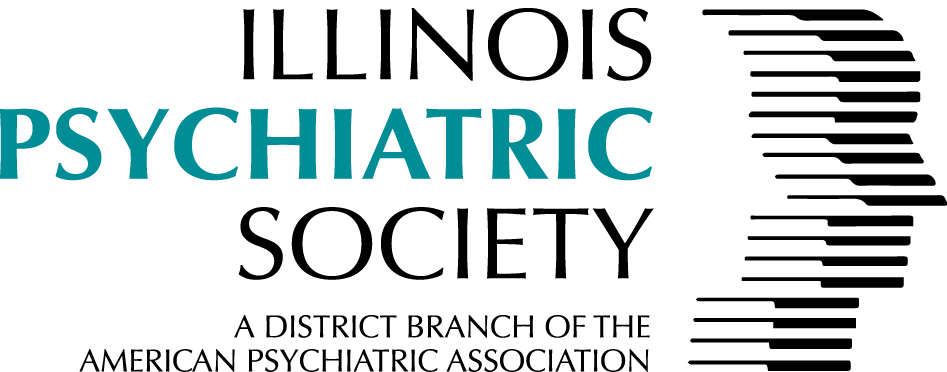Electronic Winter 2022 | Issue 53
The Role of Biomarkers in Predicting and Managing Post-Traumatic Stress Disorder (PTSD)
By: Aayush Sharma and Kurtis Lavelle
Post-Traumatic Stress Disorder (PTSD) is a debilitating disorder with a lifetime prevalence as high as 6.8% that can also present with substance abuse, mood, anxiety, and personality disorders8,12. Given the prevalence and severity of PTSD, global efforts have been made to discover novel methods to help diagnose and treat this condition, one of which is biomarkers. This is a broad category of objectively measurable indicators that can provide information on disease existence and severity1. Within the field of psychiatry, there are a few categories of biomarkers that have been identified to be potentially useful in managing PTSD: Neurosteroids, Inflammatory Mediators, and Neurotrophic proteins1,5.
The first major category of biomarkers is Neurosteroids. One study investigated allopregnanolone and pregnanolone reactivity in previously-deployed military personnel treated for PTSD8. Researchers found higher baseline allopregnanolone/pregnanolone was associated with quicker reduction in PTSD symptoms, consistent with existing literature6. The implications of this study are that 1) baseline allopregnanolone in patients predict remission speed and prognosis outcomes and 2) therapeutics involving allopregnanolone may be developed to supplement existing PTSD treatment options. Current research efforts involve investigating the use of such therapeutics in animal models10.
The next category of biomarkers is Inflammatory Mediators.There may be immune disruption in PTSD with particular signaling molecules being secreted in response to stress. One molecule involved is C-reactive protein (CRP) which is secreted in response to infection, inflammation, or chronic disease13. Studies show that peripheral CRP may be elevated in patients with PTSD when compared to psychiatrically healthy peers in both military and civilian populations, with PTSD patients having twofold higher odds for elevated CRP levels7. Other mediators are Interleukin-6 (IL-6) and Interleukin-10 (IL-10). Higher IL-6 levels may predict higher severity of PTSD symptoms while higher IL-10 levels are protective14. The serum levels of IL-6 and IL-10 were found to be predictive of therapeutic outcomes as well, which may be useful in future clinical practice for determining treatment options14.
The final category is Neurotrophic proteins like Brain-Derived Natriuretic Factor (BDNF), which is involved in neuronal plasticity2. The literature is conflicted with some studies suggesting PTSD is associated with increased BDNF5 and some suggesting decreased BDNF16. Thus, more research is needed.
Biomarker research, however, is not without limitations. A recent systematic review criticized existing literature by analyzing how sex, prior trauma, and adverse childhood experiences are rarely accounted for5. They also discuss how the future of biomarker research may be in predictive machine learning and data-driven methods, but current studies are very limited 5.
In 2018, researchers asked the question: “Could a blood test for PTSD … be on the horizon?”15. Their analysis concluded “the future of blood-based tests for PTSD … is not only on the horizon but, possibly, already around the corner”. In the half decade since their publication we have a much better understanding of neurosteroids and inflammatory mediators, but more research is needed to understand the use of biomarkers in managing PTSD.
References:
1.Almeida FB, Barros HMT, Pinna G. Neurosteroids and Neurotrophic Factors: What Is Their Promise as Biomarkers for Major Depression and PTSD? Int J Mol Sci. 2021;22(4):1758. doi:10.3390/ijms22041758
2.Bathina S, Das UN. Brain-derived neurotrophic factor and its clinical implications. Arch Med Sci. 2015;11(6):1164-1178. doi:10.5114/aoms.2015.56342
3.Hauck S, Kapczinski F, Roesler R, et al. Serum brain-derived neurotrophic factor in patients with trauma psychopathology. Prog Neuropsychopharmacol Biol Psychiatry. 2010;34(3):459-462. doi:10.1016/j.pnpbp.2010.01.010
4.Rauch SAM, Sripada R, Burton M, et al. Neuroendocrine biomarkers of prolonged exposure treatment response in military-related PTSD. Psychoneuroendocrinology. 2020;119:104749. doi:10.1016/j.psyneuen.2020.104749
5.Sbisa AM, Madden K, Toben C, McFarlane AC, Dell L, Lawrence-Wood E. Potential peripheral biomarkers associated with the emergence and presence of posttraumatic stress disorder symptomatology: A systematic review. Psychoneuroendocrinology. 2023;147:105954. doi:10.1016/j.psyneuen.2022.105954
6.Pineles SL, Nillni YI, Pinna G, et al. PTSD in women is associated with a block in conversion of progesterone to the GABAergic neurosteroids allopregnanolone and pregnanolone measured in plasma. Psychoneuroendocrinology. 2018;93:133-141. doi:10.1016/j.psyneuen.2018.04.024
7.Spitzer C, Barnow S, Völzke H, et al. Association of posttraumatic stress disorder with low-grade elevation of C-reactive protein: Evidence from the general population. Journal of Psychiatric Research. 2010;44(1):15-21. doi:10.1016/j.jpsychires.2009.06.002
8.Post-Traumatic Stress Disorder (PTSD). National Institute of Mental Health (NIMH). Accessed December 3, 2022. https://www.nimh.nih.gov/health/statistics/post-traumaticstress-disorder-ptsd
9.Aspesi D, Pinna G. Could a blood test for PTSD and depression be on the horizon? Expert Rev Proteomics. 2018;15(12):983-1006. doi:10.1080/14789450.2018.1544894
10.Rasmusson AM, Marx CE, Pineles SL, et al. Neuroactive steroids and PTSD treatment. Neurosci Lett. 2017;649:156-163. doi:10.1016/j.neulet.2017.01.054
11.Drug Approval Package: Zulresso. Accessed December 3, 2022. https://www.accessdata.fda.gov /drugsatfda_docs/nda/2019/211371Orig1s000TOC.cfm
12.The epidemiology of DSM-5 posttraumatic stress disorder in the United States: results from the National Epidemiologic Survey on Alcohol and Related Conditions-III | SpringerLink. Accessed December 3, 2022. https://link.springer.com/article/10.1007/s00127-016-1208-5
13.Friend SF, Nachnani R, Powell SB, Risbrough VB. C-Reactive Protein: Marker of risk for post- traumatic stress disorder and its potential for a mechanistic role in trauma response and recovery. Eur J Neurosci. 2022;55(9-10):2297-2310. doi:10.1111/ejn.15031
14.Renner V, Joraschky P, Kirschbaum C, Schellong J, Petrowski K. Pro- and antiinflammatory cytokines Interleukin-6 and Interleukin-10 predict therapy outcome of female patients with posttraumatic stress disorder. Transl Psychiatry. 2022;12(1):1-6. doi:10.1038/s41398-022-02230-3
15.Aspesi D, Pinna G. Could a blood test for PTSD and depression be on the horizon? Expert Rev Proteomics. 2018;15(12):983-1006. doi:10.1080/14789450.2018.1544894
16.Olam N, İbiloğlu A. Changes in CREB Activity and BDNF Plasma Levels in Patients with Post- Traumatic Stress Disorder (PTSD). PBS. 2019;(0):1. doi:10.5455/PBS.20190403045710

